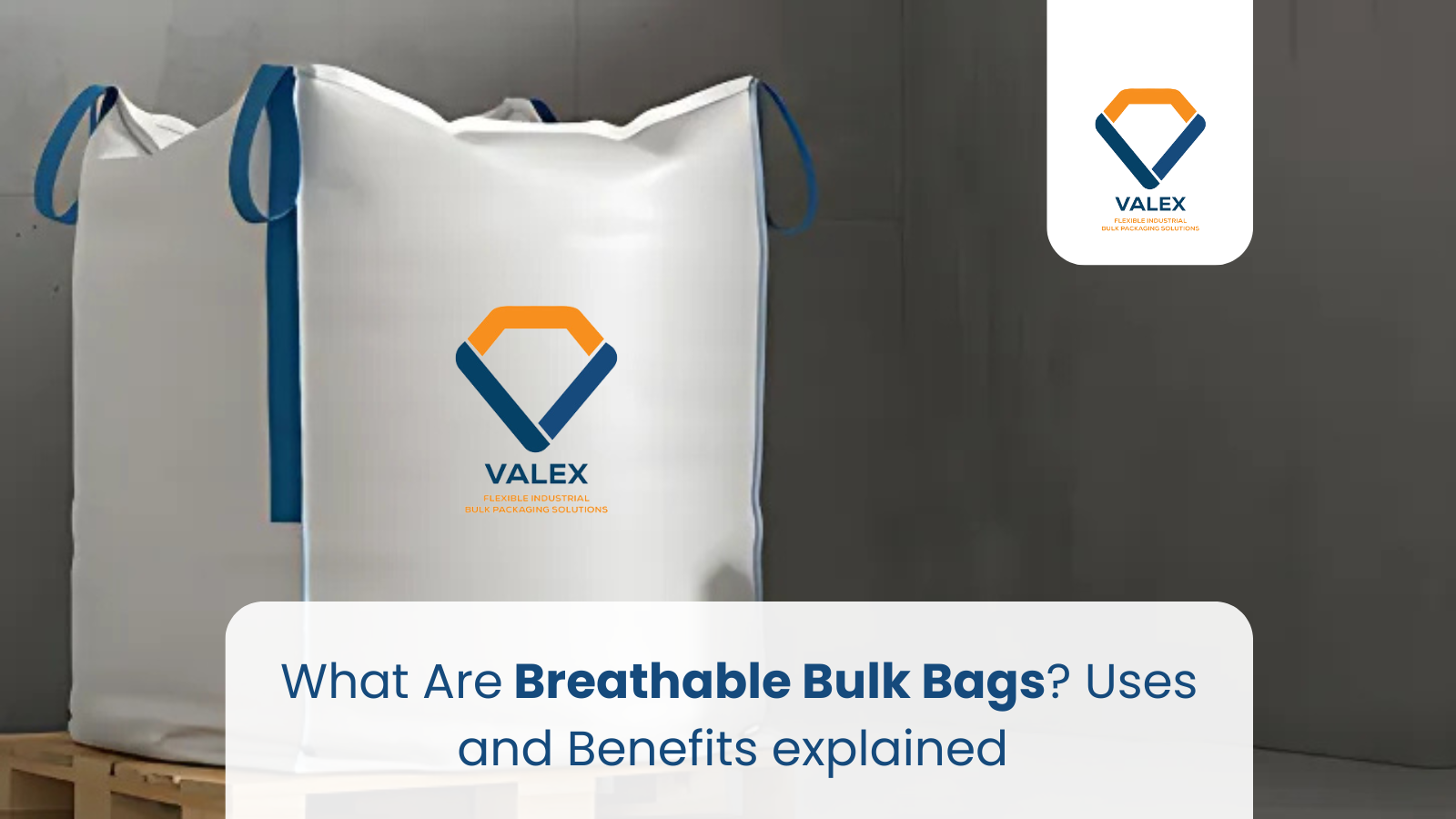Breathable bulk bags have become a go-to packaging solution for products that are moisture sensitive and need airflow to stay fresh and free-flowing. Unlike standard FIBC Bags, these specialized bags allow air to pass through the fabric, preventing moisture buildup and reducing spoilage.Here we'll try to answer what are breathable bulk bags, explain how they work, detail the materials they're made of, and highlight their most common applications.
A breathable bulk bag is a flexible intermediate bulk container designed with woven or perforated walls that permit air exchange. This ventilation keeps the contents dry and helps prevent condensation inside the bag.
Key Features

These characteristics distinguish breathable FIBC Bags from airtight designs, which trap humidity and can lead to clumping or microbial growth.
Ventilation Mechanism: Breather bags rely on the natural movement of air. As temperature or pressure changes, air flows in and out through the fabric's tiny openings. This exchange balances internal and external humidity.
Moisture Control: By allowing damp air to escape, breathable bulk bags reduce the risk of mold, mildew, and product degradation. This is especially important when storing materials that absorb moisture, such as grains or wood pellets.
Woven Polypropylene Fabric: Most breathable bags use a special grade of woven polypropylene. The weave density is calibrated so that air passes freely but fine particles stay contained.
Optional Lamination and Coatings: Some breathable bulk bags include a partial laminate or a water-resistant strip. These enhancements protect against rain or splashes while preserving overall breathability in the side panels.
FDA-Compliant Materials: When used for food items, breathable bags/Food grade FIBC Bags are manufactured with food-grade polypropylene that meets regulatory standards for hygiene and safety.
Agriculture and Grain Storage: Farmers and grain handlers use these bags for crops like rice, maize, and coffee beans. Proper airflow keeps kernels dry and prevents spoilage during storage and transport.
Wood Pellets and Biomass: Wood pellets for heating or industrial biomass require low moisture content to burn efficiently. Breathable bulk bags ensure pellets remain dry, even in damp conditions.
Chemical and Mineral Products: Certain powders and granules, including fertilizers and minerals, need consistent airflow to avoid caking. Breathable FIBC Bags let moisture escape without contaminating the product.
Textile and Fiber Storage: Non-woven fibers, wool, and synthetic yarns can trap moisture if packed in sealed containers. Breathable bulk bags keep these materials fresh and ready for processing.
Reduced Spoilage and Waste
Proper ventilation cuts down on claims and losses due to mold or clumps. That translates into lower waste and higher product quality.
Cost Savings
By minimizing spoilage, companies save on replacement costs and avoid delays in production. The initial investment in breathable bulk bags pays off quickly through reduced losses.
Enhanced Product Flowability
Materials stored in breathable bags discharge more easily because they stay free-flowing. This simplifies unloading and speeds up downstream processing.
Versatility and Customization
Breathable bulk bags can be tailored with options like partial lamination, UV protection, or specific loop configurations. This flexibility makes them suitable for diverse industries.
Breathable bulk bags offer a simple yet effective way to protect moisture-sensitive products during storage and transport. By understanding what are breathable bulk bags made of, how they work, and where they excel, you can select the right solution for your material handling needs. Whether you handle grains, pellets, chemicals, or fibers, these ventilated containers deliver better product integrity, lower waste, and smoother operations.
Protect your moisture-sensitive products with high-performance breathable bulk bags from Valex Ventures. As the best FIBC bag manufacturer, we deliver custom ventilated bags that reduce spoilage and boost efficiency.
Contact us now for a quote!
What are breathable bags?
Breathable bags are flexible containers made from woven or perforated polypropylene that allow air to circulate, preventing moisture buildup and keeping contents dry.
What is a breathable bulk bag used for?
A breathable bulk bag is used to store and transport moisture-sensitive materials such as grains, wood pellets, and minerals while allowing air flow to reduce spoilage.
What are the main uses of breathable bulk bags?
Breathable bulk bags uses include agriculture (rice, coffee beans), biomass (wood pellets), chemicals (fertilizers), and textiles (natural fibers) where ventilation preserves quality.
How do breather bags work?
Breather bags work by balancing internal and external humidity: as temperature or pressure changes, air moves through the fabric's tiny openings, carrying moisture away.
What materials are used to make breathable bulk bags?
They are typically made of woven polypropylene with calibrated weave density; some feature partial lamination or UV coatings while preserving airflow on side panels.
How are breathable FIBC Bags different from standard FIBC Bags?
Breathable FIBC Bags have ventilated walls that allow moisture to escape, whereas standard FIBC Bags use solid fabric that can trap humidity and lead to clumping.